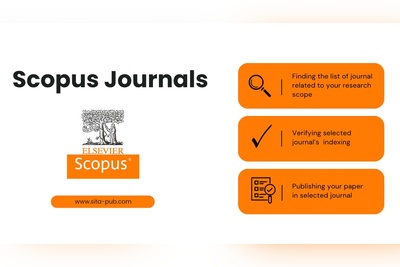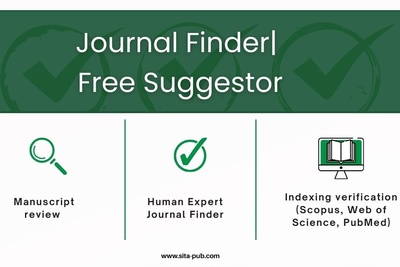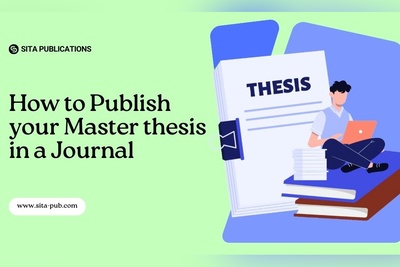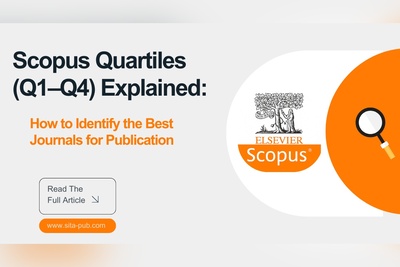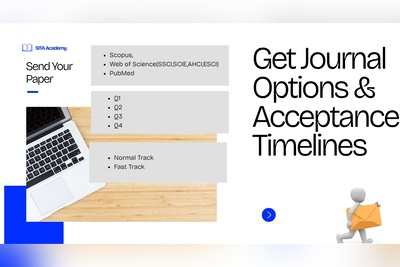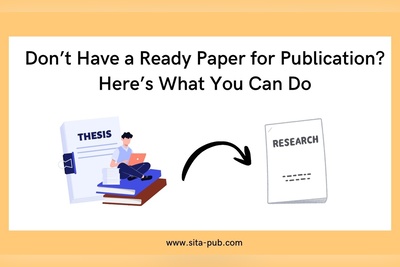The Secret Criteria Scopus Journals Use to Accept Papers
Discover the secret criteria Scopus journals use to accept papers. Learn the full submission process, review stages, and tips to boost your acceptance rate.
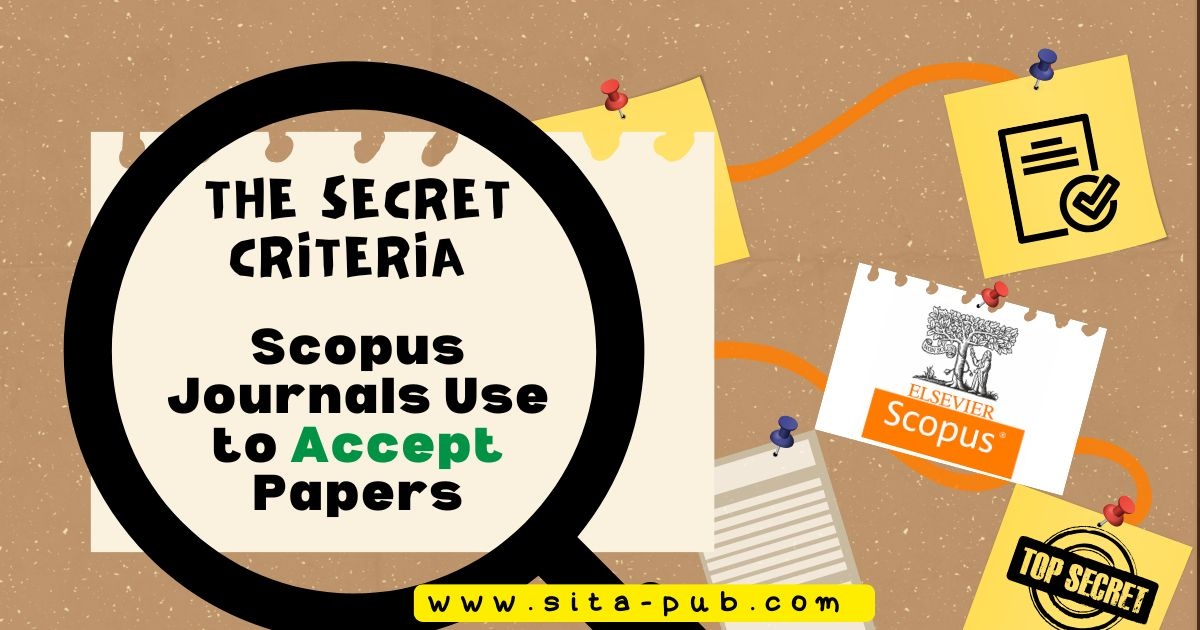
For most researchers, the path from writing a paper to seeing it published in a Scopus-indexed journal is far from straightforward. Many spend months or even years developing a study, only to face rejection at the very first stage — the desk review.
The frustrating truth is that most of these rejections don’t happen because the research is poor. They happen because the paper does not meet the journal’s hidden acceptance criteria.
Understanding what Scopus journals truly look for — and how they evaluate submissions — can help you avoid rejection, accelerate acceptance, and boost your academic visibility.
This comprehensive guide will walk you through:
The full process from submission to acceptance in Scopus journals
The editorial and peer review criteria that determine success
A practical checklist and evaluation table used by reviewers
Proven tips to increase your chances of publication
How expert assistance can help you meet all technical requirements
Understanding the Scopus Journal Publication Process
To publish successfully, you must understand how journals evaluate papers step by step. Each phase of the process involves specific criteria and decision points.
Manuscript Preparation
Before submission, ensure your paper follows a standard academic structure:
Title and Abstract – concise, clear, and informative
Introduction – sets context and explains novelty
Methods and Results – transparent, replicable, and detailed
Discussion and Conclusion – insightful and connected to previous research
Key requirements at this stage include:
Originality – The study should contribute something new.
Formatting compliance – Margins, font size, reference style, and tables must match journal guidelines.
Plagiarism-free content – Most journals use tools like Turnitin or iThenticate. Anything above 10–15% similarity raises a red flag.
Submission Stage
Once your paper is ready, it’s uploaded to the journal’s online submission system. You’ll fill out forms specifying:
Article title and authors
Affiliations and ORCID IDs
Keywords and subject classification
Declaration of originality and ethics compliance
A cover letter is often required, summarizing the paper’s importance and explaining why it suits the journal.
Editorial Screening (Desk Review)
After submission, the editor-in-chief or an associate editor reviews the paper.
This is the most critical stage — around 60% of papers are rejected here.
Editors check:
Is the topic relevant to the journal’s scope?
Is the language clear and professional?
Does it follow submission guidelines?
Are the figures, tables, and references correctly formatted?
Is the research ethically sound?
Even excellent studies are rejected if they’re poorly formatted or written.
If your paper passes this screening, it moves to peer review.
Peer Review Process
This stage involves subject-matter experts who evaluate your manuscript’s scientific quality and contribution.
Reviewers examine:
Research question clarity
Methodological soundness
Data accuracy and analysis quality
Relevance to the field
Significance of results
They then recommend one of the following:
Minor revision
Major revision
Rejection
Your response to reviewers’ comments is crucial. A polite, point-by-point reply increases your chances of final acceptance.
Revision and Resubmission
Authors revise their papers according to feedback. Reviewers appreciate authors who:
Address every comment carefully
Explain revisions clearly
Maintain professionalism in tone
This stage can take weeks or months, depending on the complexity of revisions.
Final Decision
After revisions, the editor makes a final decision based on reviewer feedback.
Outcomes include:
Accept as is
Accept with minor edits
Reject after revision (if issues persist)
An acceptance letter follows successful evaluation, confirming publication.
Production and Indexing
Once accepted, your paper enters production. The publisher performs:
Copyediting and proofreading
Typesetting for publication
DOI assignment and indexing in Scopus
Within weeks, your article becomes accessible to the academic community worldwide.
Top Secret Criteria Scopus Journals Use to Accept Papers
Below is a comprehensive summary of the main acceptance criteria editors and reviewers apply when assessing manuscripts.
# | Criterion | What Journals Evaluate |
1 | Originality & Novelty | Does your paper introduce a new concept or significant insight? |
2 | Relevance to Scope | Does it align with the journal’s aims and audience? |
3 | Scientific Rigor | Are the methods, analysis, and interpretation valid and replicable? |
4 | Abstract & Title Quality | Do they accurately summarize and represent the study? |
5 | Language & Clarity | Is your English academic, fluent, and free from grammatical errors? |
6 | Structure & Flow | Are sections logically organized and coherent? |
7 | Reference Quality | Are citations recent, credible, and formatted correctly? |
8 | Plagiarism & Ethics | Is the paper original and compliant with ethical standards? |
9 | Formatting Accuracy | Does it follow all technical guidelines (APA, MLA, etc.)? |
10 | Tables & Figures | Are visuals clear, labeled, and contribute meaningfully to the text? |
11 | Reviewer Appeal | Is the topic interesting and engaging to readers and reviewers? |
12 | Significance & Impact | Does it add measurable value to the field? |
13 | Technical Completeness | Includes ethical statements, conflict of interest, and funding info |
14 | Submission Materials | Is the cover letter and metadata complete and accurate? |
Meeting these criteria ensures that your manuscript passes both editorial and peer review filters.
Common Reasons for Rejection (Even for Good Papers)
Even strong research can be rejected for technical or editorial reasons.
Here are the most common:
Mismatch with journal scope
Weak presentation or poor English
Low methodological transparency
Incomplete literature review or old references
Improper formatting or structure
Lack of ethical statements or plagiarism issues
Overly general results without depth of discussion

Editors must protect their journal’s reputation — they only accept manuscripts that enhance its academic quality and credibility.
How to Improve Your Acceptance Chances
To stand out, focus on both scientific quality and technical presentation.
Target the right journal — Read the aims and recent articles before submitting.
Highlight novelty — State what’s new and how it fills a research gap.
Edit professionally — Poor English or formatting can ruin first impressions.
Use updated references — Include at least 30–40% citations from the past 5 years.
Avoid plagiarism — Check similarity scores before submission.
Follow ethical standards — Disclose conflicts, funding, and approvals clearly.
Be patient and responsive — Peer review takes time; polite communication helps.

The Hidden Factor: Technical Quality
Many authors underestimate technical preparation — but it’s often what determines success.
Scopus journals expect manuscripts to meet international standards for:
Formatting (margins, font, spacing, headings)
Reference style consistency
Clear, concise language
Complete metadata and ORCID IDs
Ethical compliance documentation

Even a scientifically strong study can fail at the desk review if technical details are missing.
Publication Assistance for Scopus Acceptance
At SITA Academy, we specialize in supporting researchers who want to publish in Scopus-indexed journals efficiently and ethically.
With years of experience, our team understands the exact criteria editors and reviewers use — and how to help your paper meet them.
Our Process Includes:
Paper Analysis – We review your manuscript and recommend journals with the highest acceptance rate in your field.
Formatting & Submission Support – We prepare your paper according to each journal’s specific guidelines.
Technical Quality Enhancement – We offer plagiarism checking, native English editing, and reference formatting.
Transparent Process – We never guarantee acceptance; instead, we ensure your paper meets all technical standards for fair consideration.
Additional Services:
Journal recommendation report
Submission and communication assistance
Response-to-reviewers guidance
Proofreading and copyediting
We’ve helped hundreds of researchers get accepted in Scopus and Web of Science journals, saving them time and frustration.
Verified Contact Channels
If you have any questions, inquiries, or would like to learn more about our services, please don't hesitate to reach out to us. Our dedicated team is ready to assist you.





